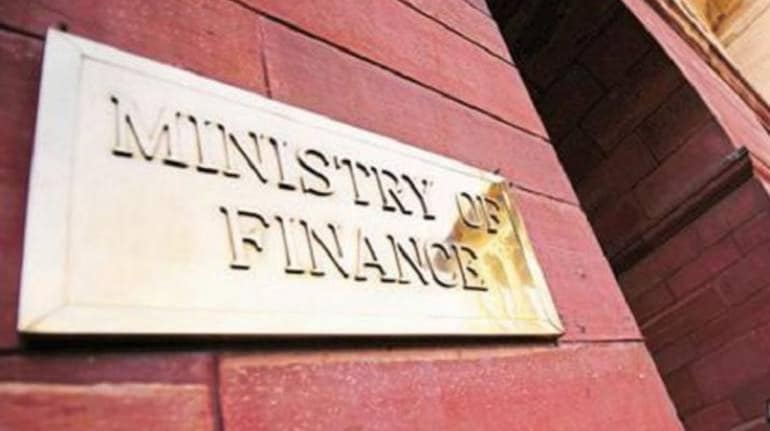



The Finance Ministry officially has started the process of preparing the Union Budget 2022-23 with meetings scheduled to firm up the revised estimates for this year and demands for next year.
While policymakers in North Block are happy with the strong tax collections on the back of a sustained economic recovery, there is worry about the mounting expenditure burden as well. The Covid-19 relief measures announced in the past six and a half months could increase expenditure for the year by Rs 2.01 lakh crore, according to Moneycontrol’s calculations.
The expenditure budgeted for 2021-22 was Rs 34.83 lakh crore. The fiscal deficit target for the year – the excess of the sovereign’s expenditure over revenue – is Rs 15.07 lakh crore, or 6.8 percent of nominal gross domestic product.
“We are encouraged by the strong showing on the tax revenue front and equally concerned with the rising expenditure bill,” a top government official told Moneycontrol on condition of anonymity. “But that concern is only regarding balancing the fiscal deficit. In no way will the government compromise, whether on capital expenditure or on spending on welfare schemes and the poor.”
This is in line with finance minister Nirmala Sitharaman’s latest statement that India is in no hurry to withdraw Covid-19 stimulus measures and that it will keep building the support required for economic growth.
The emphasis on building health infrastructure will continue and so will government spending on capital expenditure and infrastructure, she said in an interview with Bloomberg during her visit to the US.
Additional burden
On June 29, Sitharaman announced a relief package to help the economy recover from the second wave of the Covid-19 pandemic. This included steps to boost health infrastructure in the smaller cities, the tourism sector and easier loan access for the smallest borrowers.
The government pegged the size of the package at Rs 6.29 lakh crore. However, as reported by Moneycontrol, most of the measures are credit guarantees and the actual extra outlay this year due to the relief measures will be Rs 48,900 crore.

That same month, the policy on vaccine procurement by the Centre, the states and the private sector was withdrawn. The Central government said it would underwrite 75 percent of the vaccine procurement in the country. Essentially, all free vaccines are now paid for by the Centre.
This took the vaccination budget for the year to Rs 50,000 crore from Rs 35,000 crore. And it could rise.
“The current vaccination budget is for fully inoculating the adult population. If we decide to bear the cost of vaccinating those below 18 or if there is a decision on further booster shots, the outlay may increase,” the official said.
Prime Minister Narendra Modi had also said the government would extend the PM Garib Kalyan Anna Yojana (PMGKAY) until Diwali, undertaking to provide free grains until the festival in November to 800 million people in the backdrop of the second Covid-19 wave.
Under PMGKAY, the Centre distributes 5 kg of wheat or rice per person per month free of cost to beneficiaries of the National Food Security Act, over and above their usual monthly entitlement. The additional cost of extending this scheme is expected to be about Rs 94,000 crore.
Then there is the additional subsidy on fertilisers. Twice this year, the Centre announced extra outlay for fertiliser subsidies even as global commodity prices rose, leading to a shortage ahead of the rabi crop planting season. As a result, the fertiliser subsidy outlay for 2021-22 could rise by Rs 43,430 crore to Rs 1.23 lakh crore from the budget estimate of Rs 79,530 crore.
Balancing the fiscal math
Together, the additional outlays total up to extra expenditure of Rs 2.01 lakh crore this year. Assuming all other budget assumptions remain the same, this additional spending would take the fiscal deficit for the year to Rs 17.08 lakh crore, or 7.7 percent of GDP, Moneycontrol calculations show.
However, this may not be the revised fiscal deficit estimate because the Centre will try to adjust its savings accordingly. For the July-September quarter, the finance ministry imposed spending curbs on a number of ministries, which were withdrawn as the revenue situation improved.
As reported, the government is confident about net tax revenue exceeding the budget target of Rs 15.45 lakh crore and non-tax revenue numbers look comfortable as well, thanks to a bumper surplus from the Reserve Bank of India. It now all depends on the proceeds garnered from the Centre’s privatisation programme.
The finance ministry’s pre-budget meetings have just started. As the ministries go through the long, detailed process of revising their spending estimates for this year and place their demands for next year, the finance ministry will get a better picture of the fiscal math by December-end.
Discover the latest Business News, Sensex, and Nifty updates. Obtain Personal Finance insights, tax queries, and expert opinions on Moneycontrol or download the Moneycontrol App to stay updated!
Find the best of Al News in one place, specially curated for you every weekend.
Stay on top of the latest tech trends and biggest startup news.